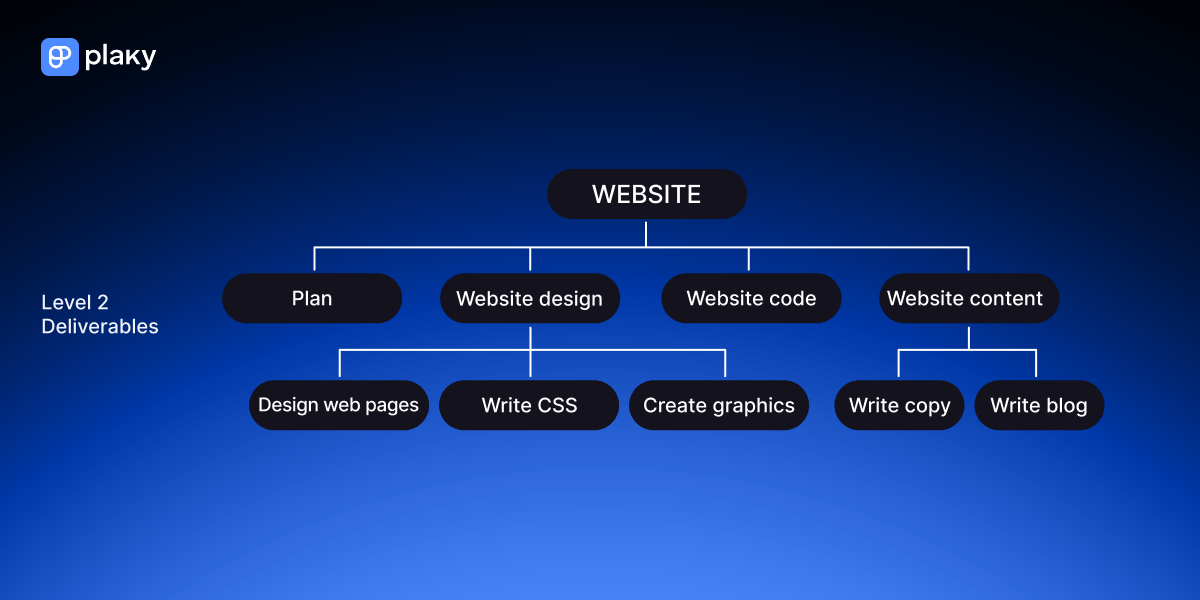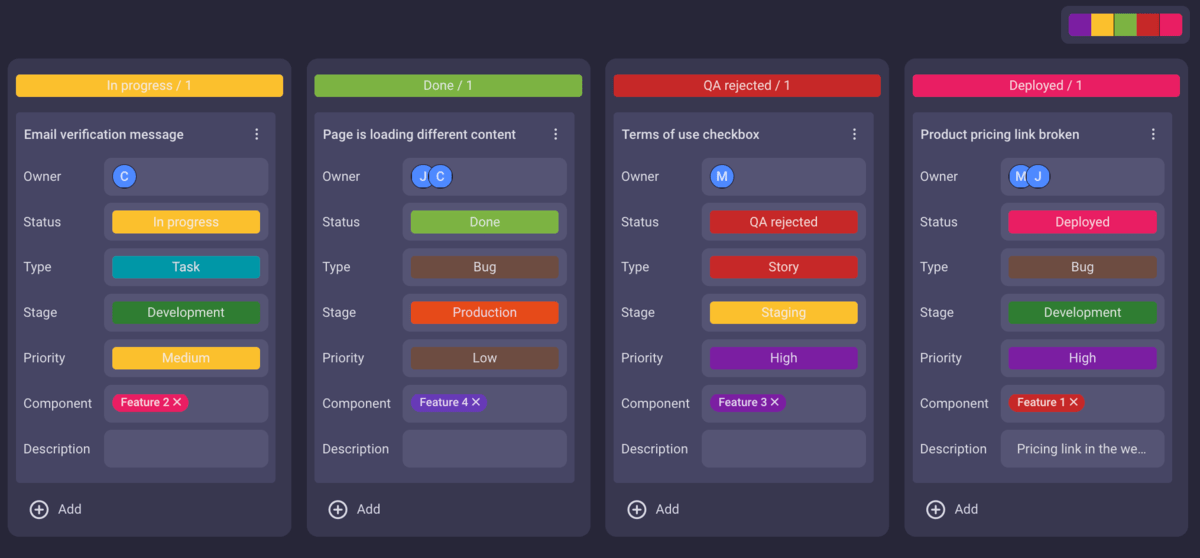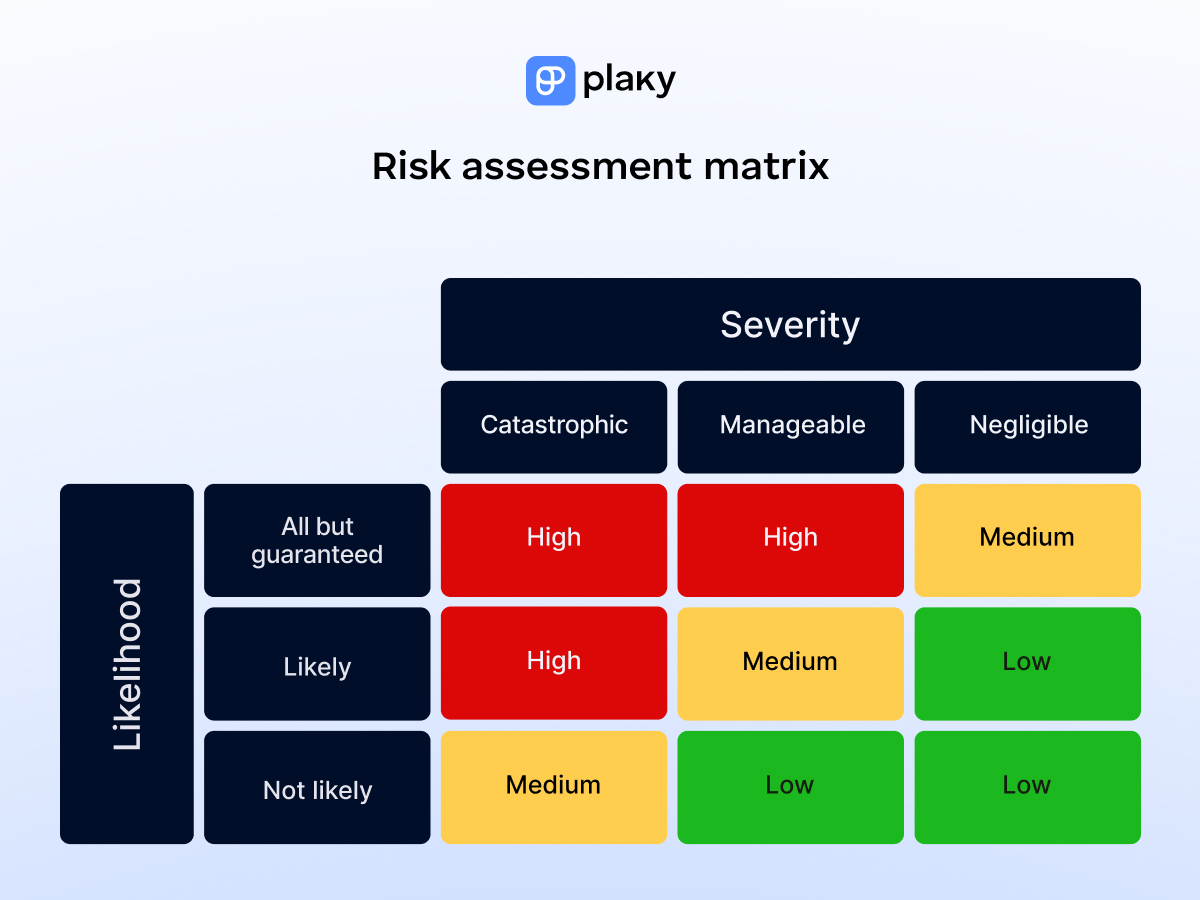All projects that don’t end in failure can be considered successes — but some projects are more successful than others.
Project success is often determined by these 3 factors:
- Budget,
- Timeline, and
- Quality.
The best projects are those that:
- Don’t go over budget,
- Finish within their set deadline, and
- Don’t compromise their quality.
These projects are rare — but you can boost the chances of filing your project among their ranks by following our 13 project management tips for beginners.

In this article:
Tip #1: Avoid scope creep
It is said that a journey of a thousand miles begins with a single step.
But the motivation to take this journey is in its destination. Not even ten thousand steps will help if you’re moving in the wrong direction.
So, one of the most important things you need to do when managing a project is know where you’re going.
In project management, we would call this the project requirements or project scope.
By detailing the project requirements, a project scope acts as the foundation for any project.
With a defined scope, you can work to ensure that each step your team makes is leading you closer to achieving the desired project end goal.
Having clearly defined requirements helps avoid scope creep. Scope creep happens when the project manager is asked to do more than originally agreed upon, but without extending the project deadline or increasing the budget.
Even in organizations with high project management maturity — where project management practices are well understood and integrated into the company culture — 30% of projects suffer from scope creep. In low maturity organizations, this number reaches 47%.
Scope creep is often cited as one of the more common issues in project management — but you can avoid it by establishing clearly defined project requirements and sticking to them.
💡 Plaky Pro Tip
To learn what the primary causes of scope creep are and hot to avoid them, read the following guide:
Tip #2: Create a WBS
Projects range in size from small ones to ones that are simply gargantuan. Depending on its size, staying on top of a project can range from difficult to impossible.
The solution to this problem is simple — create a Work Breakdown Structure (WBS).
A WBS takes the project and breaks it down into smaller, more manageable chunks (tasks).
In keeping with the journey analogy from the previous tip, a WBS shows you how many steps you need to make to complete your thousand-mile journey.
The benefits of using a Work Breakdown Structure are many — but some of the more notable ones include:
- The ability to create an effective project schedule,
- The ability to calculate the project deadline using a scheduling algorithm — like the Critical Path Method,
- The ability to identify risks by pointing out dependencies, and
- The ability to set clear project benchmarks and milestones.
With a Work Breakdown Structure, you’ll know not only where you’re going, but also how to get there — and how long it will take.

Tip #3: Get a project management certification
More than half of all projects are run by non-certified project managers.
This isn’t to say that only certified PMs know how to get the job done.
But, the average project manager works as a contractor — and having a project management certification to their name can help them out quite a bit.
Having a certification helps both land gigs and secure higher pay.
Project Management Professionals, on a global average, have a 22% higher pay than non-certified PMs — while in the US, this difference in pay stands at 32%.
Meanwhile, 72% of PMO leaders argue the importance of PM certifications for professional development.
Statistics show that acquiring a PM certification is the #1 career goal for the majority of project managers.
So, despite the fact that some of the most important project management skills are soft skills — like leadership, communication, and adaptability, that cannot exactly be taught — obtaining a certification is something you should strive towards.
This tip may not directly help you manage projects — but, having a certification in project management is likely to bring certain benefits to your project management efforts in the long run.
💡 Plaky Pro Tip
All statistics used in this article are taken from a single source. Learn more about the current state of project management by reading the complete collection of statistics here:
Tip #4: Define milestones
When running a marathon, runners encounter several checkpoints along the route.
These checkpoints allow them to take stock of their progress — see how far they’ve come, how quickly, and how much further they need to go.
It is advised to define milestones within projects for much the same reason.
Milestones serve as checkpoints that can motivate the team and inform stakeholders on the state of project progress.
Some of the most common milestones in project management include:
- Deliverables — hard-earned pieces of output that are part of the project scope (e.g. creating a website wireframe).
- Objectives — predicted outcomes that the project aims to reach (e.g. getting 100.000 subscribers).
- Phases — entering a new stage in the project lifespan (e.g. moving from the Design stage to the Implementation stage in a Waterfall project).
Milestones help the project manager keep track of the bigger picture while motivating stakeholders by giving them goals to strive towards — goals that are within a more immediate reach.
Milestones celebrate progress without losing sight of the end product — so, define them for every project.

Tip #5: Communicate
Communication is the glue that holds projects together.
Statistics show that communication accounts for 90% of what project managers do.
This shouldn’t be surprising, considering that PMs are expected to:
- Set expectations,
- Provide and listen to feedback,
- Negotiate with clients, vendors, or stakeholders,
- Keep the team up to date on project progress,
- Manage tasks,
- Motivate, and so much more.
Therefore, a project manager needs to be willing to communicate often and able to communicate effectively.
It’s also important to note that the project manager is the one who sets the tone for communication within the project.
It’s fair to say that communication is one of the most important project management skills.
Your job isn’t just to communicate directly, but also to organize communication.
This is best done by creating a communication management plan which outlines:
- How frequently communication is expected (in terms of planned meetings, this shouldn’t stop the team from directly messaging one another or the PM),
- What channels should be used,
- What direction of communication is supported,
- When feedback will be provided, and
- Who should be contacted for what.
On paper, this may sound like something that stilts communication — but the effect is quite the contrary.
A good communication management plan lets the team focus on the contents of their message rather than worry about its form.
💡 Plaky Pro Tip
Learn more about the different types on communication in project management and how to manage them by following these 6 tips:
Tip #6: Use a project management tool
Let’s imagine it’s the early 2000s and you’re driving to your friend’s house in another city with no GPS or navigation to guide you.
How do you get there?
Your options include writing down directions over the telephone, stopping to ask passers-by for directions, or looking up physical road maps.
People still got around in the early 2000s — but isn’t it simpler to use GPS navigation in the 2020s?
Well, much in the same vein as driving without a GPS today, you’re giving yourself the same handicap if you try to manage projects without using project management software.
With a project management tool like Plaky, you can centralize all your project management communication and collaboration needs on one powerful and customizable platform.
All information related to a task will be contained within that task’s card.
All communication pertaining to a task can be done within the card’s Comment section — eliminating the need to search for relevant info through lengthy DM histories or email.
Through the Kanban view feature, a PM tool like Plaky also gives the PM visual insight into the project’s current state. Meanwhile, the Activity Log feature lets them stay informed on all project goings-on.

Now, you could manage projects without such a tool — pyramids were built without it.
But, with how extensive the list of things that project managers do is, streamlining everything that can be streamlined through technology is something every PM should strive towards if they want to maximize performance — and protect their sanity.
Tip #7: Manage risks
As Murphy’s law states, “Everything that can go wrong will go wrong.”
It is with this mindset that project managers should approach project planning and execution.
Entertain the idea of what can go wrong. Be as comprehensive as you can when doing so. This will help you identify most (if not all) project risks.
You should also make sure to involve other stakeholders in this risk identification process.
As Michelle M. Campbell, an experienced project manager with many PM certifications to her name, put it:

“Conducting an early team pre-mortem leads to potential risks I had not anticipated and buy-in from the team. A pre-mortem is where I ask my team members to tell me why the project (or even an early task) is likely to fail.”
After conducting a pre-mortem, create a response plan for every project risk you’ve identified.
For this, we recommend using a risk assessment matrix to help you prioritize risks according to their likelihood of occurring and potential severity.

This is what risk management is all about, and it is essential to guaranteeing project success.
After all, poor risk management has proven to be one of the top 10 challenges projects face (#8, to be exact) — yet 34% of PMs simply ignore this.
But, with proper risk management, you can minimize the chances of an issue derailing your project.
Tip #8: Use the right PM methodology
Project management methodologies are sets of guidelines used to plan and execute projects.
Backed up by years of research and case studies, project management methodologies help guide efforts in standardized and — more importantly — effective ways.
Despite this, only 42% of project managers follow formal PM methodologies.
The differences in success rates between projects that follow a PM methodology and those that do not, speak for themselves.
| Item | Projects with formal PM methodologies | Projects without formal PM methodologies |
|---|---|---|
| Met goals/intent | 73% | 58% |
| Completed within budget | 63% | 48% |
| Completed on time | 59% | 43% |
However, you can’t use just any methodology and expect it to deliver results. Different project management methodologies cater to different types of projects.
For example, Waterfall is a methodology that’s amazing for construction and manufacturing due to its meticulous and comprehensive planning and pre-planning.
But, for software development, most project managers prefer to use one of the many Agile frameworks, like Scrum or Kanban.
There are more than 20 project management methodologies to choose from — picking the one that fits the needs of your project will establish a solid foundation upon which to build a successful project.
Tip #9: Don’t multitask
A common theme you’ll find among many project management methodologies is how they argue against multitasking.
The truth of the matter is that multitasking is a myth. What we do instead is switch between two (or more) tasks, much like single-core CPUs that can only execute one command at a time. And, when our attention is divided like this, we lose a lot in terms of productivity.
Kanban and Critical Chain Project Management are just some of the methodologies that explicitly discourage multitasking, but you can find hints of this in other methodologies as well.
For example, Lean is focused on reducing waste. And, while multitasking isn’t explicitly mentioned anywhere in Lean, many still define it as a waste of effort and therefore undesirable within this methodology.
So, regardless of what project management methodology you’re using and whether or not it discourages multitasking, we want you to be aware of its detrimental effect — multitasking inhibits productivity, so aim to avoid it.

Tip #10: Use the RACI chart
Ultimately, the project manager bears responsibility for the project outcome — but not even a project manager can do everything.
More importantly, they’re not always the best person to turn to for specific challenges. However, it’s quite often the case that the project manager is the best person to refer you to the best person to turn to.
To avoid doing this randomly and on an individual basis, many project managers opt to use a RACI chart instead.
RACI charts are responsibility assignment matrices that outline who is:
- Responsible,
- Accountable,
- Consulted, and
- Informed,
For each task in the project WBS.
Using a RACI chart helps in setting expectations and maintaining orderly procedures throughout long and complex projects. The longer and more complex a project is, the more useful RACI charts become.
Tip #11: Get stakeholder buy-in
A project manager without stakeholder buy-in is like a ship captain whose crew isn’t privy to their destination or allowed to make any suggestions. Sure, the ship can still reach its destination, but its biggest success will be avoiding mutiny.
If you’re a project manager, we like to assume merely avoiding mutiny isn’t your driving motivator.
If you want to improve your chances of success, getting stakeholder buy-in as early as possible is something you should strive towards.
A stakeholder is defined as anyone involved in the project who can be affected by its outcome, either positively or negatively.
In project management, stakeholders are:
- Clients,
- Project sponsors,
- Higher management,
- Employees, and even
- Consumers.
Stakeholders can also be respected individuals within the company who aren’t part of the project team but still have a lot of pull with project team members. As Michelle M. Campbell put it:

“I have learned that influencers who can derail your project often do not have lofty titles. Via my team, I identify stakeholders that team members often defer or listen to. I bring that person into the project even if only to inform them periodically of the project status.”
In this context, buy-in can best be defined as active engagement from stakeholders.
The best way to get stakeholder buy-in is by:
- Making them part of the planning process,
- Giving them a chance to voice their feedback, and
- Accepting their feedback when it is beneficial to the project.
By the way, this includes everything about a project. Obviously, stakeholder buy-in is required for identifying project requirements — but you can also engage your team by asking them which piece of PM software they’d like to use for a specific goal. This type of incentive is essential for securing buy-in.

“I invite feedback always. People are most likely to own what they contributed to.”
Even if you don’t integrate stakeholder feedback — and it’s unrealistic to expect that you always will — listen and let them know their voices are heard. Not all of their suggestions will be worth their proverbial weight in gold, but some surely will.
Tip #12: Test deliverables
You only ever get to make one first impression.
It’s important to keep this notion in mind if a deliverable is something that’s being rolled out to users — perhaps it’s your project’s beta available only to early access users.
An influx of bad reviews can do irreparable damage to your product or brand.
So, it won’t matter that you’ve fixed the bugs that caused these bad reviews — the reviews aren’t going away. And the average consumer isn’t going to look past this bad press — even if the information is outdated.
The situation gets even worse if we’re talking about early reviews and launch reviews. There, an oversight that slipped past the team can effectively bury the project.
As important as it is to establish milestones to keep track of project progress and raise team morale, it’s just as important to test deliverables which often serve as these milestones.
Tip #13: Perform project post-mortems
Contrary to what the name implies, a project post-mortem isn’t something that should only be performed on failed projects.
To keep things positive, let’s say you’ve finished your project and that it was a success.
Where do you go from here?
Well, for starters, it’s a good idea to look back at the project and evaluate how things have gone. Just because the project was a success doesn’t mean everything went smoothly.
Were there issues that your risk management plan failed to account for?
Were the task duration projections inaccurate? If so, which tasks and by how much?
Were there any internal issues?
Make notes of these things. Analyze them and reflect.
And, if the project was a failure, do the same thing — just more solemnly.
This way, you’ll be able to learn from both your successes and failures and increase future project success rates.
💡 Plaky Pro Tip
To keep your project under control, you’ll need to know what to do during the course of a project — this blog post can help you with that:
Conclusion: You can’t guarantee project success, but you can increase its chances
There is no perfect recipe for project success.
Even gymnastic enterprises — organizations with the very best project management track records — only manage to:
- Meet original goals 75% of the time,
- Not go over budget 64% of the time, and
- Complete on time 58% of the time.
Moreover, 11% of their projects are deemed as failures.
Statistics for non-gymnastic enterprises are even worse than this — and those of project managers who don’t follow formal methodologies and manage risks are worse yet.
So, while you cannot guarantee project success, there’s still a lot that you can do to drastically improve the chances of project success.
By following these 13 project management tips, you too can strive for better results.
